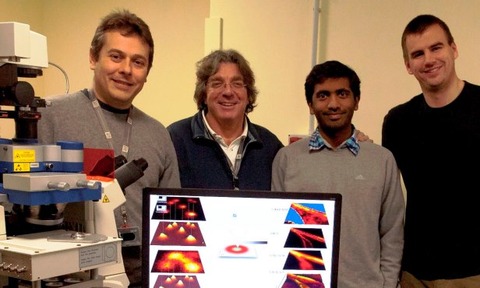
Scientists couple the chemical information of STED microscopy with high resolution spatial and force measurements.
The Istituto Italiano di Tecnologia (IIT) was founded in 2003 in the city of Genova to promote Italy’s technological development and advanced education.
Dr Claudio Canale is a team leader at IIT within a group focusing on the application of scanning probe techniques in the study of bio-materials and bio-mechanisms.
One of his main projects has been to couple STED (stimulated emission depletion microscopy) and atomic force microscopy (AFM).
Describing this work, Dr Canale said, “In our department, an entire group works on the development of optical super-resolution techniques and this has led to a STED microscope based on a conventional multi-photon platform from Nikon Instruments.
“We had the idea to couple the capability of this instrument with those offered by an AFM,” he stated.
There have been several iterations of the new combined set-up.
Now, the main goal is to characterise biological processes having simultaneous access to morphological and mechanical properties and coupling both of them with chemical recognition capability directly provided by STED with a resolution in the order of tens of nanometres.
“We can recognise target molecules or particular membrane components by STED and we can look at the fine structural and mechanical changes by AFM,” added Canale.
The choice of JPK’s AFM came after experience using many different commercial AFM systems.
Upon settling on the NanoWizard, Dr Canale commented, “I have been impressed by the unique capability of this instrument to work in a liquid environment with both nanometric spatial and piconewton force resolution.”




